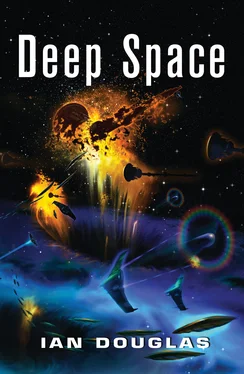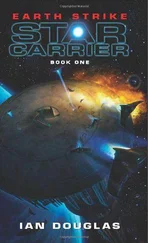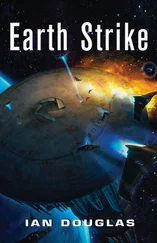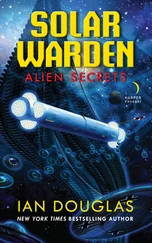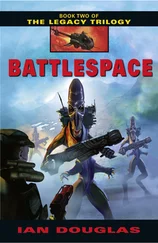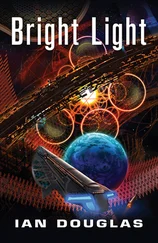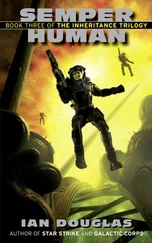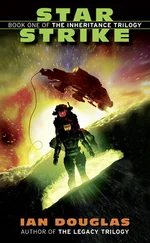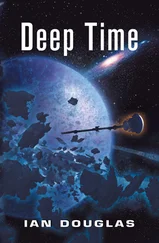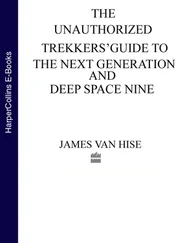The ur-Sh’daar—the prefix ur was from the German, and carried the meaning of “original,” “primitive,” or “proto.” According to Gray, during his intelligence debriefing, the ur-Sh’daar had been a multispecies interstellar culture occupying a small galaxy—Gray’s Sh’daar source had called it the N’gai Cloud—that possibly had been ejected from the Andromedan galaxy during a collision billions of years before. That cloud eventually had been captured and devoured by the Milky Way, and all that was left of it now was the star cluster known as Omega Centauri.
At some point close to a billion years ago, before Omega Centauri was absorbed by the far larger spiral of the Milky Way galaxy, the ur-Sh’daar had entered something known as the Technological Singularity. In brief, their technological prowess had advanced so far, so fast, that they had become—to use Konstantin’s word—godlike. Though the details were still poorly understood, the ur-Sh’daar had all but vanished … into another dimension, into higher planes, into the remote future … no one knew for sure. What was known was that the Sh’daar were the residue, the lower-tech cripples, the ones left behind when the gods blinked out of the here and now.
As for the Starborn, even less was known about them. One of the Sh’daar client races, a very powerful, technically advanced civilization of huge gas bags that had evolved in the atmosphere of a planet much like Jupiter in Earth’s solar system, was known as the H’rulka. The question was how a species resembling titanic Portuguese men-of-war adrift in the upper atmosphere of a gas giant could possibly have developed mining, smelting, and advanced spaceflight when they had neither free oxygen in their atmosphere to support fire, nor a solid planetary surface from which to mine metals.
The H’rulka themselves spoke of the “Starborn,” an advanced species that had come to them before they’d joined with the Sh’daar, taught them how to filter metal from the atmosphere, and given them the technology to reach, first, their world’s system of moons, and then the worlds of other stars. Confederation Intelligence assumed that the Starborn were the Sh’daar … but Koenig had never bought that. The Sh’daar, apparently in terror of the technic singularity that had taken the ur-Sh’daar beyond their ken and left them behind, seemed driven to prevent the development of high technology, not foster it. Koenig was pretty sure that whoever or whatever the Starborn were, they were not Sh’daar, and most xenosophontologists seemed to agree with him.
Nor did it seem likely that they were related to the ur-Sh’daar, evolved in a different galaxy some billions of years in the past. The H’rulka, though the xenosophs weren’t sure of the details, had been given their technological boost something like twelve to fifteen thousand years ago, after which they were contacted—and subsumed—by the modern Sh’daar, who’d found a means of reaching from the N’gai Cloud of 900 million years ago to the Milky Way galaxy in the recent past.
“You’re saying we need more data,” Koenig said after a long moment.
“That would certainly help, Mr. President. We have no way of evaluating the threat with little or no hard information. I would recommend deploying a carrier battlegroup to Omega Centauri to confront whatever it was that destroyed the Endeavor . Once we know whether we are facing Sh’daar, ur-Sh’daar, Starborn, or something else entirely, we may be able to formulate a more comprehensive plan of action.”
It made sense. A modern starcarrier battlegroup was the most flexible, most powerful means of confronting an unknown nonhuman threat.
“That would make sense, Konstantin,” Koenig said. “The America battlegroup is already preparing for a deployment out to Omega Centauri. However … the decision will be Admiral Steiger’s, and the Confederation Naval Command. The Slan capture of 36 Ophiuchi may … complicate matters. A lot .”
“Indeed. However, if the Sh’daar clients follow past tendencies, they will pause to digest what they have swallowed. The need for information about the identity of the destroyers of the Endeavor is critical.”
“Will you make that recommendation to Geneva?”
“In so far as my recommendation carries any weight there, yes, of course. Keep in mind, however, that I am technically the … property of the United States of North America, and that my input would be considered politically suspect by Geneva. At least until they succeed in assuming control of this facility by mandating that I am an asset for all of Humankind, not just for North Americans.”
“Politics …”
“As you say. It is a political issue, certainly.”
“I will do what I can, Konstantin,” Koenig said. “I can’t make any promises.”
“Keep me informed,” Konstantin told him. “I have a keen interest in how this will play out.”
So do I , Koenig thought. Karyn … alive …
9 November 2424
Omega Centauri
T -0.876gy
1546 hours, TFT
It had taken hours, but Red Mike at last was able to confirm his location both in space and in time.
The encircling panorama of stars was nearly solid, but individual stellar spectra could be identified like fingerprints, and the patterns of stars, distinguished by color, age, and luminosity, matched perfectly the photographs taken by the CVS America twenty years ago when she’d passed through the TRGA cylinder and entered this space and time. A careful search across that glowing backdrop had revealed the Six Suns, a circlet of brilliant blue stars half a light year away, each forty times the mass of Sol, all orbiting a common center of gravity.
That was Red Mike’s final confirmation. He had stepped across from Omega Centauri Tee-prime to Omega T -0.876gy, the dwarf galaxy falling in toward the spiral arms of the Milky Way more than 800 million years in the past.
Omega T -0.876gy, the N’gai Cloud of the Sh’daar, pulsed and throbbed with electronic life.
A quartet of deep space fortresses guarded this end of the TRGA cylinder, small asteroids bristling with weaponry and sensory gear. They’d ignored him as he drifted out of the cylinder, apparently unable to detect him when his internal energy currents were channeled down to such a low, slow level.
Deeper into the central core of the tiny galaxy, toward the blue-hot mystery of the Six Suns, radio and laser communications wove a complex and tangled network of technic civilization. Numerous planets were in high-velocity transit in the distance, their wakes of distorted space visible across several light years. The Sh’daar, it had been discovered twenty years ago, were able to move entire planets by warping a bubble of space around them—the faster-than-light Alcubierre Drive on an unimaginably huge scale.
Red Mike noted the fact of the moving planets, but remained incurious as to where they were being taken, or why. He detected the movement of starships as well. Many would be piloted by the Sh’daar equivalent of AIs, electronic life forms more akin to Red Mike than to their organic predecessors. Others, he knew, were piloted by organics. By Refusers …
The tiny probe spent several more hours recording and mapping, all the while using local magnetic fields to very slowly decelerate until its velocity was zero relative to the surrounding space. Then, equally slowly, it began accelerating once more, moving back in the direction from which it had come.
There appeared to be no response from the fortresses, no indication that he’d been noticed.
With luck, the Sh’daar instrumentation on those guardian fortresses had not picked up the tiny surge of electromagnetic energy from a thirty-kilogram lump of nickel-iron when it unobtrusively reversed its course.
Читать дальше
